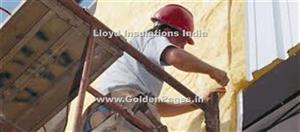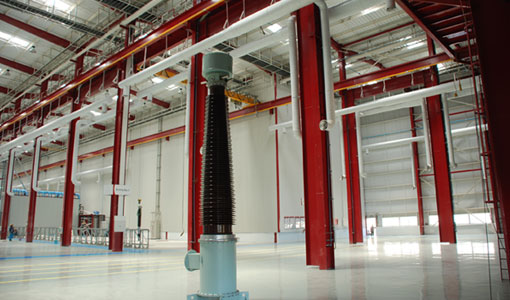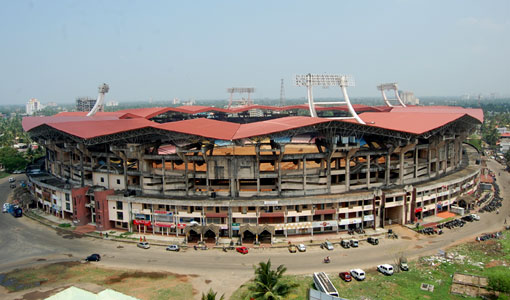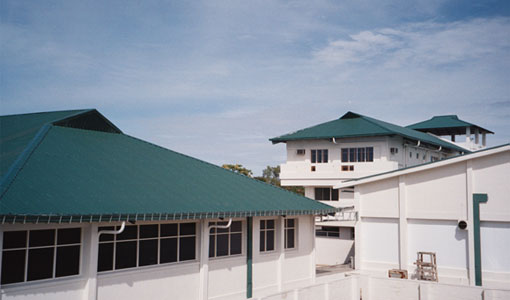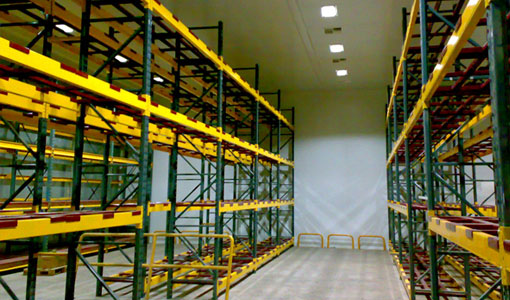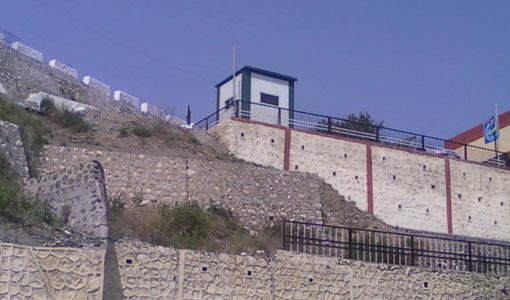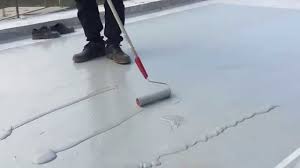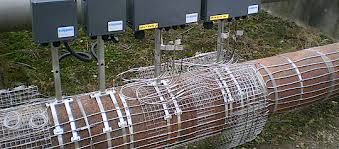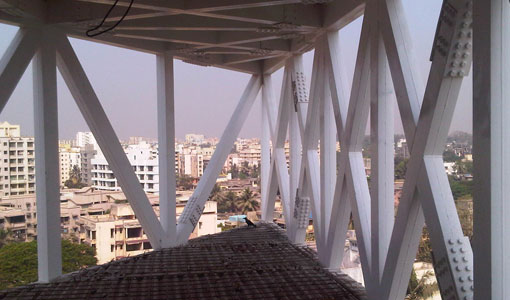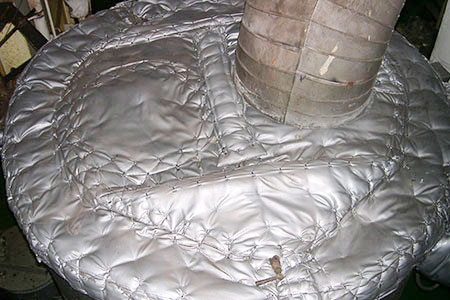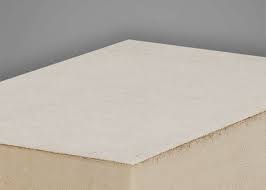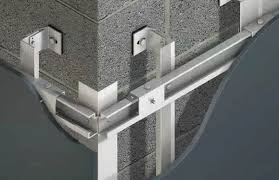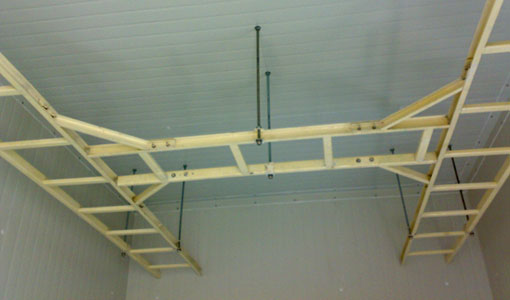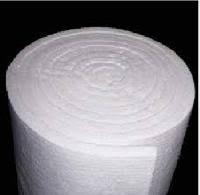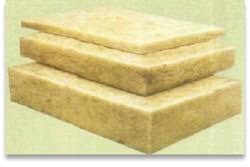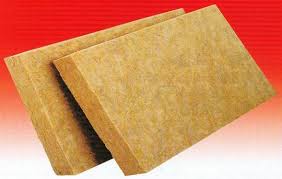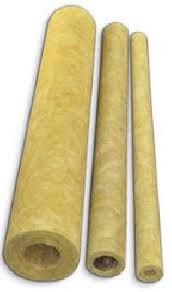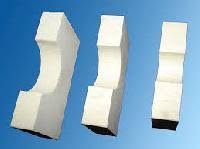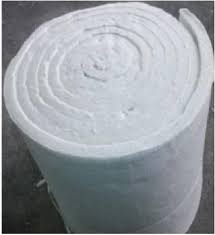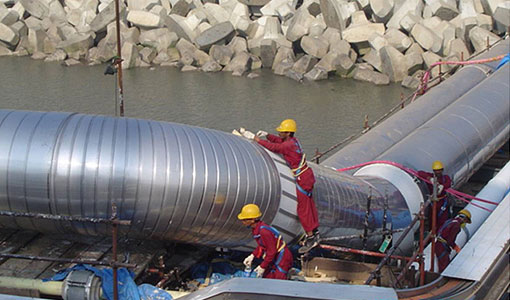
Thermal Insulation
Lloyd Insulations India Limited is THE largest organization in Industrial Thermal and Acoustic Insulation contracting company in this part of the world. We have been associated with every major project executed in India in the Industrial and commercial sectors for over 50 years. Our Leadership status and Industry Expertise in this is responsible for our being Market Leaders with over 70% market share.
- We are an All-India organization with seven dedicated Insulation supply points, four full service regional offices, 24 branch offices and over 110 customer contact centers to handle assignments at any location in India presenting a reservoir of resources to handle Thermal Insulation contracts country wide.
- Over 20000 insulation and cladding workmen trained to deliver quality work under all conditions with specialization in insulation of large industrial projects.
- Countrywide infrastructure for logistics, supply chain management and commercial interface of all kind.
We are an ISO 9000 Company known for our commitment to deliver total performance to our client. For this purpose, we are equipped to provide design of systems, manufacture and supply of specialty materials and their scientific application. Almost always, we measure the performance of the applied system in actual service and ensure delivery of total customer satisfaction.
Large database generated over the years have equipped us to face any application challenge in the Indian environment.
We are actively serve on Standards bodies like ISO, Bureau of Indian Standards (BEE) and others.
Thermal Insulation plays an important role in every Process / Manufacturing plant from view point of "Energy Conservation". In applications like hot / cold insulation properly designed "Insulation System" can achieve any of the targets set through a focused "Energy Conservation" program implementing the designed insulation system through scientific erection practices at actual work site is the key to achieving these goals. Our experience of more than 50 years in this field has taught us a number of Do's and Don'ts imparting unbeatable application expertise to our site personnel.
Assisting various organisations right from Basic Engineering i.e. Design of Insulation system, Preparation of Material Specifications, Preparation of Quality Manuals for materials as well as Site Erection practices and, last but not least, correct Application at site is the major aspect of our business model. We have extended these services to a number of our clients where they have achieved targeted results. We also offer Annual maintenance service to most of our larger clients.
Applications handled by us range from -200°C upto 1450°C and can provide you all the necessary Technical back-up in regard to selection of materials and ancillaries which are most important for a proper "Insulation System". We provide these technical back-ups as part of our turnkey solutions, which include supply and application and guarantee the applied systems for performance.
Our commitment towards assisting industry to arrest of energy loss has been one of the spearheading causes to place us in the leading position. Today the company offers a wide range of services coupled with the state of the art products (Insulation & Allied) to meet the most varied and stringent demands of the Industry at large.
The company specializes in carrying out site works with high importance to
- Maintaining Project Specifications,
- Following the highest Safety norms,
- Ensuring the highest Quality Standards,
- Ensuring overall Economy to Users
Hot and cold insulation work in Turbines, Boilers, Pressure Vessels, chemical processes in Refineries / Petrochemicals, Pharma and metallurgical Industries for equipment, Piping & critical Cryogenic processes constitute major part of our offerings.
Lloyd insulations have the comprehensive competence to execute industrial Thermal Insulation projects on turnkey basis to International standards. We have the expertise to design, fabricate, supply, and install advanced insulation and allied systems strictly keeping with the special requirements that individual projects call for. We are the first company to offer our valued customers an advanced thermal insulation audit service.
ROCKLOYD, the company's flag bearer for over 3 decades has been in continuous development to meet and exceed performance expectations of large projects as they have come up. At the same time, the company has built into this product, features like certified fire barrier properties and ecological features like bio solubility, negligible binder contents (to limit phenol formaldehyde contents to the lowest levels) and encouraging recycle contents in its manufacture.
Lloyd Insulations have been closely involved with the development of advanced insulation products and systems that have set new Industrial standards including SUPERCERA Spun Ceramic fiber for High temp service upto 1450°C and Isoloyd & LloydFoam Rigid urethane foam insulation for low temperature insulation down to cryogenic temperature (both preformed or in-situ produced), for ultimate Thermal efficiency of tanks, process plants and pipelines.
Specialty products like SUPERTHERM Low Temp Pipe supports. Fire barrier grade and Water Repellant grade of ROCKLOYD Stonewool Slab, Mattress and Pipe Section Industrial insulation products are the first choice of major project specifies.
Each of our products are tested for all critical qualities in dedicated labs equipped with all the required equipment and manned by experienced personnel. Quality of each product is audited closely through an interactive process between engineers is the field and the professionals at the manufacturing plants.
Instant, we provide a comprehensive range of turnkey insulation services, such as high temp, cryogenic, acoustic and fire protection insulation featuring best available ancillary materials. We are constantly innovating by evaluating and developing the use of new materials and application techniques. This allows us to offer forward-thinking, intelligent solutions, which reduce whole life costs. Our customers obviously think so, as we receive a great deal of repeat business. We care for the environment and products offered by us meet and exceed all current environmental norms. We encourage use of insulation to thicknesses calculated to reduce harmful CO2 emissions from our clients' plant.
Our fabrication services include sheet metal fabrication and fire protection cladding along with a specialist department offering fire tested mattresses and thermal mats. Special areas of expertise are marine applications and hazardous application (Like Hydrocarbon, Ethylene / Propylene oxide systems).
We are currently involved in a number of large insulation contacts for almost all corporate houses in India apart from public sector undertakings like:
- Essar
- Reliance
- Adani Power / Tata Power
- Petronet LNG
- Indian Oil Corporation Limited (IOCL)
- Hindustan Petroleum Corporation Limited (HPCL)
- Bharat Petroleum Corporation, in all their refineries Limited (BPCL)
- Oil & Nature Gas Corporation (ONGC)
- National Thermal Power Corporation (NTPC)
We have worked with many of the well known consultants, like:
- Bechtel International.
- Wall Bridge Brown & Root International
- Shell Global Solutions International BV
- Samsung Engineering Co. Ltd. South Korea
- ThyssenKrupp (Uhde India Limited)
- Engineers India Limited.
- Toyo Engineering India Limited
- Aker Kvanerner Powergas India Ltd.
- Mott MacDonald
- Jacobs H&G Limited.
- Siemens
- Stone & Webster Inc.
- ABB Lummus Global
- Lurgi AG
- Linde AG
- UOP
- MW Kellogs
- And many more...
Our Insulation services are available for all over India and in neighboring countries.

